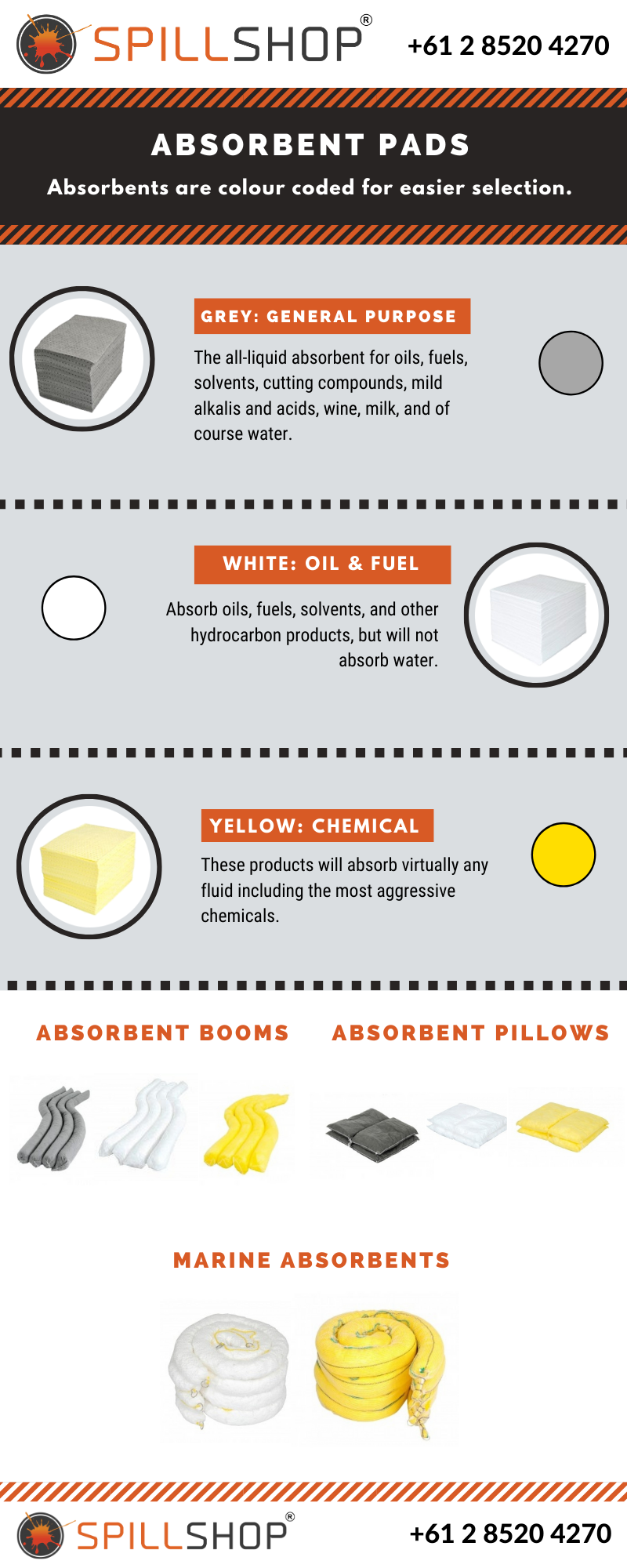What Type of Absorbent Do I Need?
At SpillShop, we are dedicated to helping our clients prevent, respond to, and effectively clean up spills and pollution incidents. Our range of high quality spill response equipment ensures that spills can be effectively contained on site or at your facility before they cause damage to the environment or surrounding communities. An uncontained oil or chemical spill can have disastrous consequences for your business, not only financially but also in terms of your ongoing professional reputation.
Absorbents are one of the most crucial pieces of spill response equipment to have on hand when responding to a pollution incident. We stock a range of SpillBoss absorbents for use on both land and water, including absorbent pads, absorbent pillows, absorbent booms, and marine absorbents. SpillBoss absorbents are made from polypropylene, a durable material which in its raw, meltblown state has a high liquid absorption capacity. The efficiency of polypropylene absorbents has led to their use across a broad range of industries in Australia, such as the oil, mining and gas sectors, on construction sites, and in manufacturing facilities.To learn more about our range of polypropylene absorbents and their correct use in the case of a pollution incident, see our useful guide.
It is important to note that there are different types of absorbents, specifically designed for cleaning up different liquids or chemicals. Not sure which type of absorbent is required for your facility or workplace? Here is a breakdown of the three main types of absorbents and their uses:

General Purpose Absorbents
As the name suggests, general purpose absorbents are used for absorbing a wide range of liquids including oils, fuels, solvents, cutting compounds, wine, milk, and water. They can also be used to absorb mild alkalis and acids, although we would recommend choosing chemical absorbents to clean up any aggressive chemical spills. At SpillShop, we stock general purpose lightweight and heavyweight dimpled absorbent pads, which are tear-resistant and offer increased strength, as well as general purpose absorbent pillows, and general purpose absorbent mini-booms.Our absorbents are colour coded for easier selection, with general purpose absorbents being grey.
Oil & Fuel Absorbents
Oil and fuel absorbents are colour coded white, and they will absorb oils, fuels, and some solvents but will not absorb water. What differentiates this type of absorbent from the others is its ability to clean up water-based spills, with general purpose and chemical absorbents only recommended for use on land. We stock both dimpled and meltblown oil absorbent pads in lightweight and heavyweight varieties, along with small and large oil absorbent pillows, a variety of oil and fuel marine booms, and other marine absorbents such as oil and fuel nets andsweeps. To find out more about effectively responding to water-based spills, see our guide to marine spill response.
Chemical Absorbents
The third absorbent type is chemical absorbents, which are colour coded yellow. Chemical absorbents will absorb virtually any liquid, including acids, caustics, coolants, solvents, and other aggressive chemical solutions. Because they are designed to absorb hazardous liquids, chemical absorbents are ideal for use in workshops, laboratories, hospitals, and chemical storage facilities. At SpillShop, we provide chemical dimpled pads in both lightweight and heavyweight varieties, which offer extra loft for rapid absorption and better fluid retention, small and large chemical absorbent pillows, and chemical absorbent booms. Our chemical mini-booms can be used to divert spills from drains and waterways, while the larger snap-hook join booms offer ease of deployment on hard surfaces.
Make sure that your facility is effectively prepared for a pollution incident in 2020. For a handy visual guide to help you choose the best type of absorbent, see our infographic below. You can also visit the SpillShop FAQ page for more information, or Contact Us today to discuss your needs.


